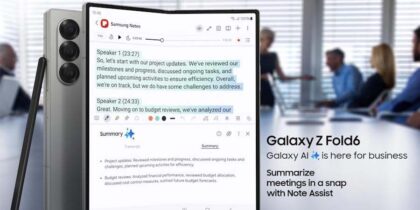Each day, millions of people visit large venues in the United States and expect instantaneous access to those venues’ Wi-Fi networks for their smartphones, tablets or wearable devices. Many of these facilities’ existing wireless networks are obsolete and simply not up to the challenge of hosting hundreds or thousands of devices simultaneously.
Large-scale venue IT administrators are facing a rapidly changing wireless landscape that requires a solution that can be quickly upgraded and deployed to work on the spot. To help guide this process, here’s a checklist of best practices and an example of a venue that successfully deployed a high-density Wi-Fi network to meet this demand.
Best Practice #1: Determine and Eliminate Overall Pain Points
More than $2.4 billion is spent annually on conventions and other large events. Competition to attract these vendors and exhibitors is fierce at every large-scale venue. In order to stay relevant, these sites should determine and eliminate overall pain points.
One of the 10 largest convention centers in the world recently overhauled its wireless network. With more than 2 million visitors each year, the International Exposition Center (I-X Center) in Cleveland, Ohio, knew they needed to make a significant change if they wanted to remain competitive with mega-hotels. The I-X Center realized that if they wanted to achieve their goal of doubling their annual attendance, an overhaul of the existing wireless infrastructure was needed and would be a big step up from the lower-quality Wi-Fi previously provided to the center’s tech-savvy attendees, exhibitors and vendors.
Best Practice #2: Bring in the Right Team to Address Customers’ Needs
When it comes to covering an entire show floor, breakout meeting rooms and office space with a wireless network that provides an outstanding attendee experience, bringing in the right team is critical. Addressing your customers’ needs and making it right the first time will prevent making multiple changes when the network fails to adapt.
In order to provide that always-connected experience, the best team can be a partnership between a local, specialized company and a global enterprise solutions provider. The I-X Center selected the Business Network Team (BNT), a business telecommunications and IT management company, to design their newly upgraded network. The objective was to provide widespread bandwidth coverage and throughput for the entire 2.2 million-square-foot center. BNT had to then determine the best choice for reaching their objective — a cross-section of products and technologies or a one-size-fits-all approach for the I-X Center.
Best Practice #3: Deploying the Right Solution
With state-of-the-art stadiums luring away conventions, existing venues need to provide seamless coverage with an infrastructure that can offer connected users the same level of experience to keep them coming back each year. For the I-X Center and BNT, they secured a technology provider that would enable their new telecommunications network and design to really stand out.
BNT provided the I-X Center with one overall technology solution that enabled multiple technologies to work together at high speed and with high demand. Samsung products and technologies were deployed throughout the center to create a fully functional network with Wi-Fi, tablets, business telephone systems, security cameras and smartphones.
Best Practice #4: Results Always Demonstrate the Value of the Decision
As you determine the best option for your wireless infrastructure future, it’s always wise to study the results — which demonstrate the value of the decision — and ask yourself if you’d make the same choice again.
At a convention center, exhibitors and vendors will come with applications and systems that require powerful Wi-Fi to gather their market intelligence and capture data while remaining connected during the show. Many transactions for guests are made on smartphones, so there is no room for loss of connection if it means a potential customer could walk away.
Today, the I-X Center’s network, powered by Samsung, includes more than 220 powerful 802.11n Wi-Fi access points that cover the entire showroom floor, conference rooms and administrative areas, guaranteeing coverage throughout the massive facility. Its visitors experience a fully integrated, reliable mobile communications solution throughout their time at the convention.








